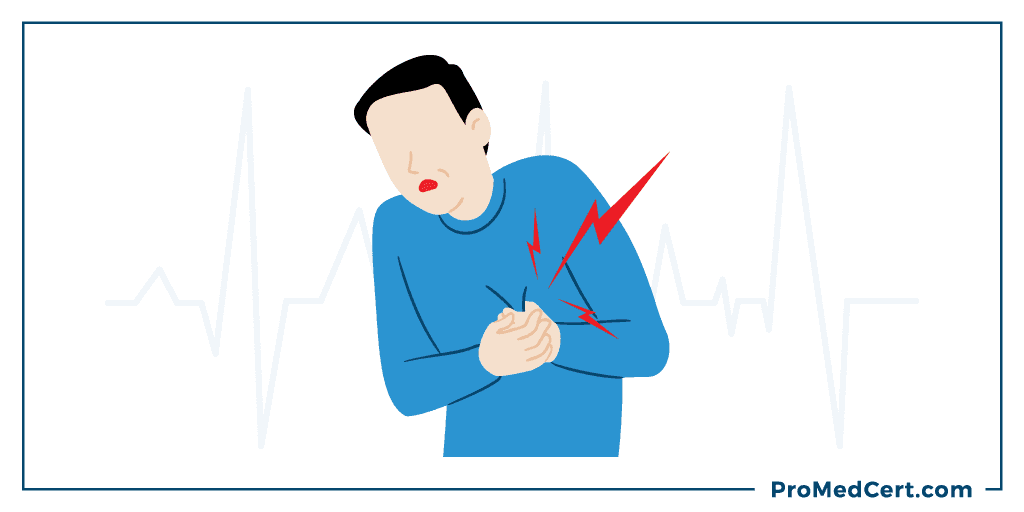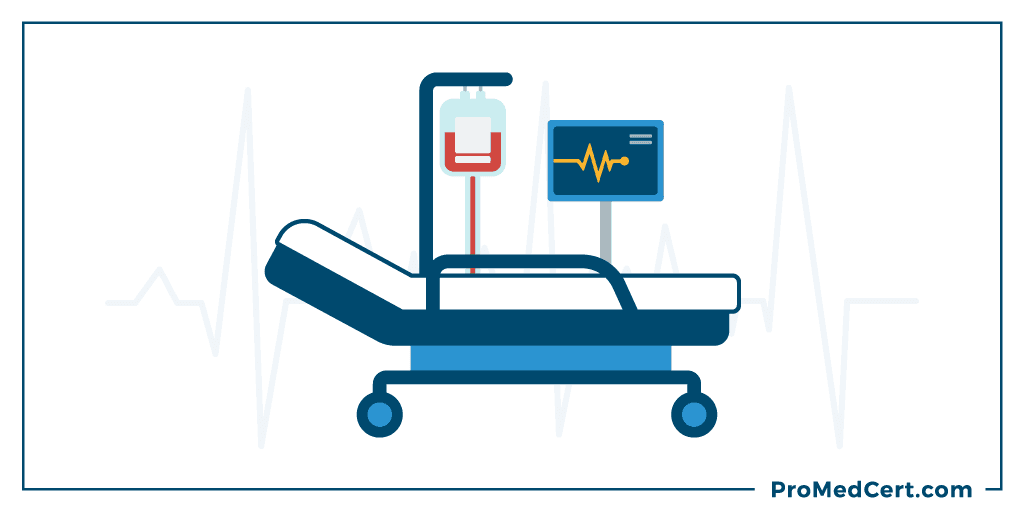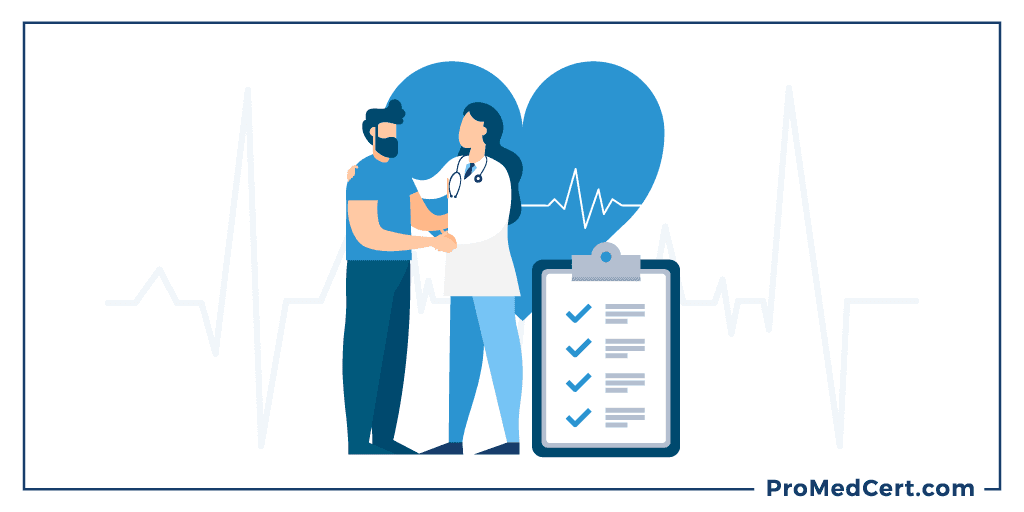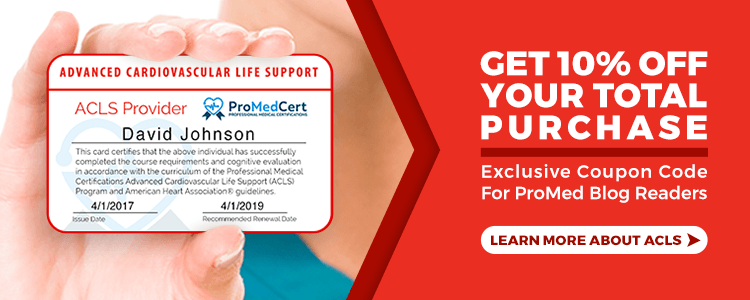ACLS Standards: Post-Cardiac Arrest Best Practices

According to the American Heart Association (AHA), 475,000 Americans die each and
every year due to cardiac arrest. What’s more, about 90% of people who experience an
out-of-hospital cardiac arrest (approximately 350,000) will lose their lives as a
result. Conversely, nearly 45% of out-of-hospital cardiac arrest victims will live,
provided bystander CPR is administered. In fact, CPR, particularly when administered
immediately after cardiac arrest, can double or even triple a person’s chance of
survival.
While the location where the cardiac arrest takes place certainly plays a role in
the chances of survival, the actions taken by someone trained in proper
resuscitation techniques can also have a life or death impact. Specifically, a
victim of cardiac arrest will have a much lower mortality risk when the individual
administering care adheres to ACLS standards. The algorithms learned in ACLS
certification, when applied in a timely and accurate manner, can dramatically
improve the chances of a positive outcome.
It’s important to point out, however that even those who do receive appropriate
treatment and survive a cardiac arrest aren’t necessarily out of the woods. While
immediate ACLS care reduces the risk of mortality, other factors could diminish the
patient’s quality of life following the event. For instance, brain damage that
occurs during cardiac arrest could result in impaired speech, mobility and memory.
This is why aftercare is equally important.
The Importance of ACLS Standards

According to the National Center for Biotechnology Information (NCBI), the
percentage of ACLS steps adhered to by someone performing CPR is an accurate
indicator of return of spontaneous circulation (ROSC). This is true regardless of
whether the care is administered in a hospital setting or not. In fact, because
secondary medical problems are largely dependent on the time that lapses between the
onset of cardiac arrest and emergency care, positive patient outcomes are directly
associated with adherence to these ACLS standards.
In fact, with the exception of age and location, all of the remaining factors that
can negatively impact outcomes of cardiac arrest are related to the time delay
between the medical event and the initiation of care. For example, as more time
passes without blood flow, the oxygen supply to the brain and vital organs is
expended. As a result, tissue death can occur.
Adherence to ACLS standards can effectively reduce the risk of negative outcomes
associated with these time-related factors. In other words, the administration of
timely, high-quality compressions and appropriate medication can mean the difference
between life and death.
Post-Cardiac Arrest Best Practices

Following ROSC, proper intervention can further reduce the risk of negative outcome
by limiting tissue damage and preventing additional cardiac arrest from occurring.
According to AHA guidelines, there are certain best practices that health care
professionals should follow post-cardiac arrest. These best practices are as
follows:
Cardiovascular Care
Appropriate cardiovascular care involves gathering a 12-lead EKG to ascertain ST
elevation presence, maintaining an appropriate blood pressure, administering of
vasopressors and administering a coronary angiography if necessary. It’s also
important to check for internal bleeding, conduct blood tests (CBC/CMP), and
frequently monitor vital signs. In some instances, insertion of an arterial line and
round-the-clock blood pressure monitoring may be necessary. Also, depending on the
cause of the cardiac arrest, additional interventions may be required.
Neurological Care
Brain injury contributes to loss of life in 68% of patients suffering out-of-
hospital cardiac arrest and 23% of in-hospital cardiac arrest. As such, health care
professionals should monitor for any signs of potential brain injury, such as
seizures, neurocognitive dysfunction, coma and brain death. If any of these signs
exist, brain activity should be monitored via EEG. Further, in the event of
seizures, appropriate medication may be required to reduce their occurrence and
lessen the likelihood of long-term damage.
Respiratory Care
Following cardiac arrest, a chest x-ray may be required in order to verify
appropriate ET tube placement. Monitoring of blood gases can also contribute to
improved outcomes. The AHA recommends a PaCO2 level of 35-45 mmHg. Keep in mind that
certain treatments may impact PaCO2 levels. In such instances, actual PaCO2 readings
may be skewed. Post-cardiac arrest pulmonary care should also include addressing
other factors that may have contributed to the arrest, such as breathing problems.
Treatment of Pulmonary Embolism
If the cause of the cardiac arrest has been identified as a pulmonary embolism (aka
pulmonary thrombosis), treatment should be administered as soon as possible. The AHA
recommends the administration of fibrinolytics, though hospital protocol should be
followed.
Sedation to Reduce Patient Stress
It’s common practice to intubate a patient following cardiac arrest, as doing so
ensures proper oxygen and ventilation. Sedation may be recommended to help reduce
the level of stress and agitation the patient may feel during the intubation
process. Additionally, for patients experiencing cognitive dysfunction following
cardiac arrest, intubation may help reduce the risk of self-injury.
Targeted Temperature Management
Initially, Targeted Temperature Management (TTM) – aka induced hypothermia - was
recommended only for patients who had experienced out-of-hospital ventricular
fibrillation or pulseless ventricular tachycardia for a prolonged comatose state
(more than 20 minutes). It is now believed that any cardiac arrest patient with a
non-shockable rhythm may benefit from TTM. Following at least 24 hours of TTM,
gradual rewarming to normal core temperature can begin. Sedation may be necessary
during this phase.
The goal of every health care professional treating cardiac arrest is to reduce the
long-term impact on the body for survivors as much as possible. The six best
practices above demonstrate the need to address the key body systems that can be
negatively affected by cardiac arrest. By understanding the ACLS standards and their
impact on care during and following cardiac arrest, health care professionals can
both increase the chances of survival and improve the patient’s quality of life
after the fact.
Want to make a positive impact on the lives of others? Enroll in one of our life-
saving skills courses today. Choose from Cardio Basic Life Support (BLS), Advanced
Cardiac Life Support (ACLS), Pediatric Advanced Life Support (PALS) or
Cardiopulmonary Resuscitation (CPR), Automated External Defibrillator (AED) and
First Aid courses and become certified for as little as $35! Click here to learn
more.

